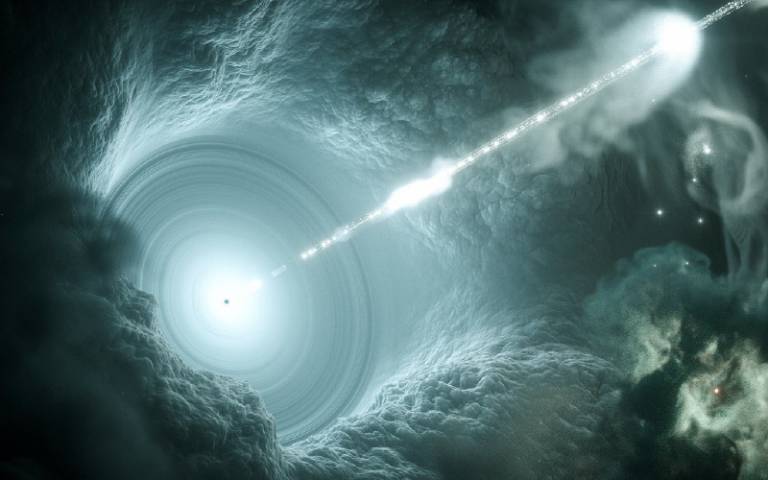Student: Beatrice Crudele
First supervisors: Matteo Agostini (HEP) and Kinwah Wu (MSSL)
Entry year: October 2022

Project description:
Neutrinos are the most elusive particles of the Universe, able to travel undisturbed for billions of light-years, passing through planets, stars, and even entire galaxies. They are unique messengers to study otherwise inaccessible parts of the Universe in which energy and gravity create the most extreme conditions. Extraterrestrial neutrinos have been at the forefront of discovery in astrophysics for several years. They taught us how stars shine by burning hydrogen and then violently explode by releasing 99% of their energy in neutrinos. We recently witnessed the first simultaneous observation of neutrinos and gamma-rays from a supermassive black hole associated with relativistic jets of a blazar. This exciting discovery has already revolutionised our theories on the origin of cosmic rays and started a new era of multi-messenger astronomy. The field is now at a turning point. New, giant neutrino telescopes are being prepared to explore the cosmos at even higher energy frontiers. The future planetary network of telescopes will dramatically increase our chance of observing new astrophysical neutrino sources. In this context, a particularly promising initiative is the Pacific Ocean Neutrino Experiment (P-ONE), whose design maximises the sensitivity for ultrahigh-energy neutrinos and source localisation in the sky. This PhD project will focus on the experimental aspects of P-ONE, its design and role in the planetary network, and, finally, the connection between its discovery power and leading models predicting neutrino flares generated in astrophysical events. The work will concentrate on simulation and data analysis and deeply connect to theory and phenomenology.
Funding: “Cosmoparticle” funding from Physics and Astronomy
 Close
Close

